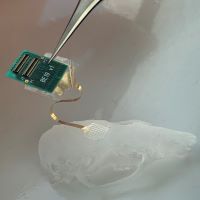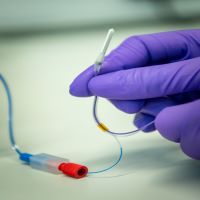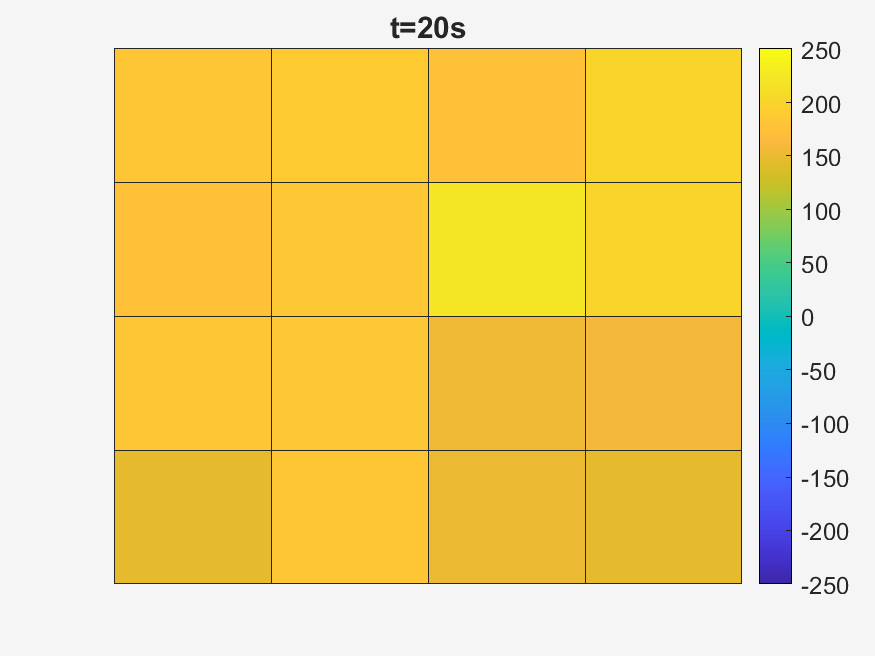Neuroengineering
|
We explore the application of organic electronic materials in neural interfacing, aiming to understand how the brain works and to develop new tools for the diagnosis and treatment of neurological disorders. Among our achievements are (i) the development of ultra-conformable microelectrode arrays for recording corticograms, recently used in the clinic to record single neuron activity from the surface of the brain of epileptic patients, and (ii) the first use of a transistor in recording brain activity, resulting in record-high signal-to-noise ratio. We are currently developing high density arrays for large-scale recordings as well as strategies to improve the electronics/tissue interface in order to extend the functional life of implants. |
Targeted Drug Delivery
|
Targeted drug delivery can focus treatment on the region of the body affected by a given pathology thereby enhancing the effectiveness of the treatment while reducing side effects inherent in systemic treatments. Towards that end, we are leveraging the ion conductivity of polymers to develop implantable devices that can deliver drugs precisely when and where they are needed. We showed this to be a promising strategy for managing epileptic seizures. We are currently testing the efficacy of this approach for treating pathologies such as brain tumours and Parkinson’s disease. |
Wearable Electronics
|
Wearable electronics that measure the electrical activity of the human body in a continuous, non-invasive fashion are receiving a great deal of attention for healthcare and fitness monitoring applications. Establishing a reliable electrical contact with skin is a challenging problem: Current electrodes show a limited lifetime and are uncomfortable to wear. We develop electronically conducting ionic liquid gels that enable long-term cutaneous recordings. These biocompatible gels are designed to adhere to skin and make low impedance contacts that are comfortable to wear. |



